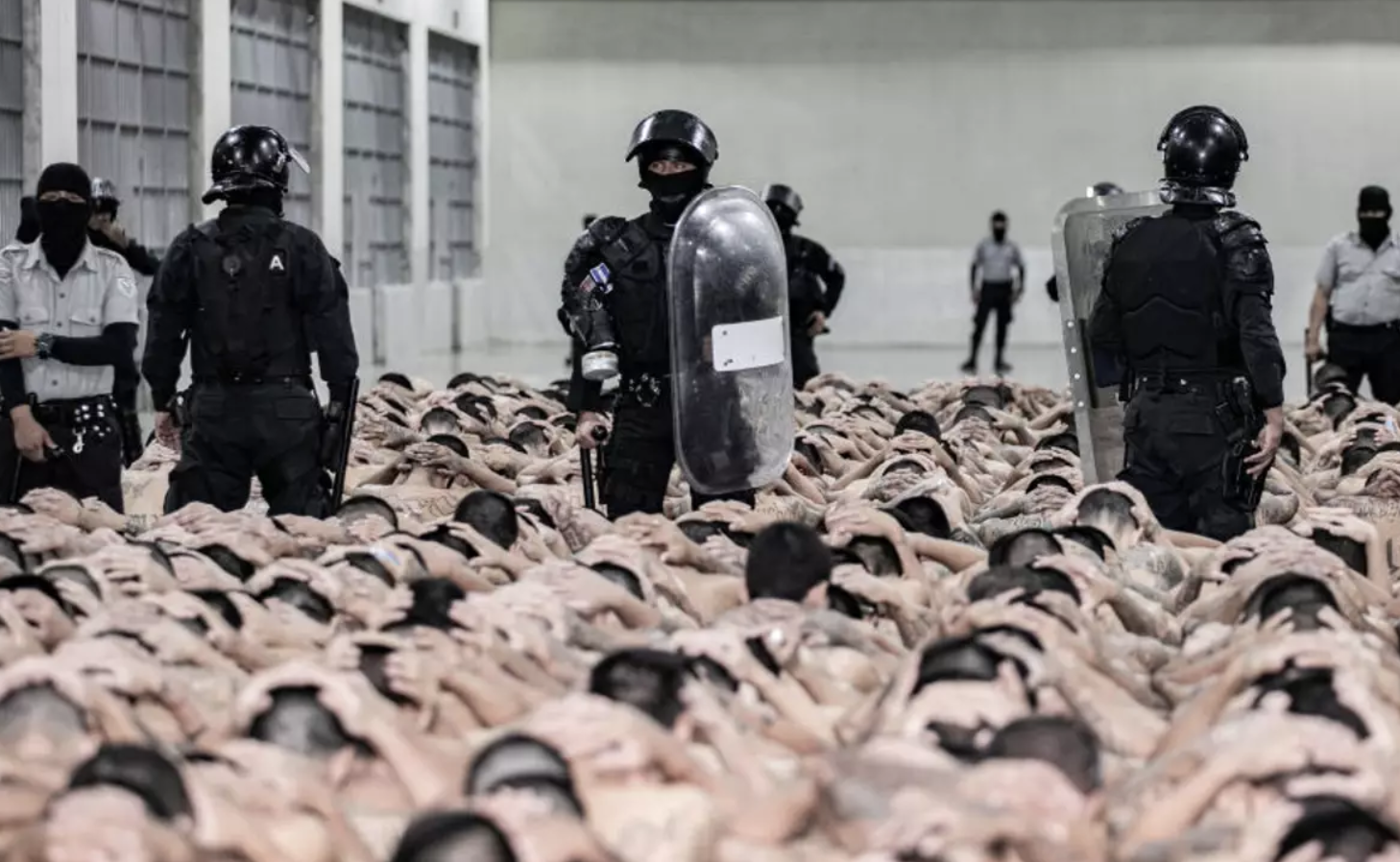In recent years, two prison systems have drawn significant attention due to their starkly contrasting conditions and management practices. On one side of the globe, El Salvador’s Centro de Confinamiento del Terrorismo (CECOT) has earned the title of “the world’s worst prison,” raising international concerns after discussions suggested it could even house U.S. citizens. Meanwhile, in the United States, the William C. Holman Correctional Facility in Atmore, Alabama, known as “Slaughterhouse” and “House of Pain,” remains a symbol of overcrowding, understaffing, and deteriorating infrastructure. This report takes an in-depth look at these two institutions, exploring the conditions, policies, and controversies surrounding them.
El Salvador’s Centro de Confinamiento del Terrorismo (CECOT)
The CECOT, opened in 2023, was built as part of President Nayib Bukele’s hardline approach to tackle El Salvador’s gang violence. Located in the town of Tecoluca, the facility was designed to accommodate 40,000 inmates, making it one of the largest and most secure prisons globally. The goal was to house the country’s most dangerous criminals, particularly members of notorious gangs and violent criminals.
Despite its imposing security features—including 19 watch towers, two concrete walls, and electrified fences—life inside the prison has been described as unbearable. Human rights groups have condemned the conditions as cruel and inhumane, citing overcrowding, inadequate sanitation, and poor ventilation as key issues. The United Nations Subcommittee for the Prevention of Torture referred to the facility as a “concrete and steel pit,” highlighting the brutal conditions that prisoners endure.
Reports from journalists and human rights observers paint a grim picture of daily life inside CECOT. BBC News Mundo’s Leire Venta, who visited the prison, described the oppressive heat, with temperatures reaching 35°C. Inmates live in cramped cells, sleeping on metal bunks without mattresses, and their meals consist of simple food such as rice, beans, and hard-boiled eggs, often eaten with their hands. The facility’s director warned reporters not to make eye contact with inmates, as even basic items can be turned into weapons.
The political implications of CECOT’s existence have only increased in recent months. U.S. Secretary of State Marco Rubio revealed that President Bukele has proposed a controversial agreement, offering to accept deportees from the United States, including dangerous criminals and even U.S. citizens. The proposal has sparked intense debate, with critics arguing that sending U.S. citizens to such a facility represents a human rights violation. However, supporters of Bukele’s approach argue that it could help alleviate overcrowding in U.S. prisons while enhancing El Salvador’s security.
William C. Holman Correctional Facility in Atmore, Alabama
On the opposite end of the spectrum, the William C. Holman Correctional Facility in Alabama has long been notorious for its brutal conditions. Built in 1969 to house 581 inmates, the facility now holds a significantly larger population, leading to chronic overcrowding. This issue has created an environment rife with violence, gang rivalries, and riots, with incidents becoming increasingly common. The facility has earned its fearsome reputation, often referred to as “Slaughterhouse” or the “House of Pain.”
Overcrowding is a key issue at Holman. The prison’s original infrastructure has not been able to keep up with the growing number of inmates. This has resulted in cramped conditions, where inmates are often forced to share overcrowded dormitory cells. Additionally, the lack of proper cooling systems in a facility located in the hot Gulf Coast region makes life inside even more unbearable. Industrial fans are the primary means of cooling, but they are insufficient to provide relief from the oppressive heat, with some areas being compared to “boiling alive.”
The severe understaffing at Holman further exacerbates the situation. In 2018, reports revealed that the number of correctional officers was less than one-fifth of what was needed for routine operations. High staff turnover and the lack of sufficient personnel have created an atmosphere of fear and instability. This understaffing has been a contributing factor to the violence that plagues the facility, which has seen multiple incidents of stabbings, riots, and hostage situations.
A particularly disturbing aspect of Holman is its role as Alabama’s designated execution site. The prison houses many inmates on death row, and it has garnered widespread criticism due to the controversial methods used in executions. The recent execution of Kenneth Smith, who was administered the nitrogen hypoxia method, sparked outrage after reports described him as writhing and convulsing during the process. This gruesome execution, which raised concerns about the method’s effectiveness and humanity, has led to further scrutiny of Holman’s role in capital punishment.
A Tale of Two Prisons
The conditions inside both El Salvador’s CECOT and Alabama’s Holman Correctional Facility reveal extreme forms of punishment and human suffering. While CECOT is hailed for its advanced security measures, it is condemned for the inhumane treatment of inmates, with overcrowding and harsh living conditions becoming central to its criticisms. Holman, on the other hand, presents a different but equally grim reality, where overcrowding, understaffing, and violence define daily life.
The stark differences between the two facilities underscore the broader issues facing the prison systems in both countries—issues such as overcrowding, inadequate resources, and the failure to provide humane conditions for inmates. As both facilities continue to face international scrutiny, the debate over the treatment of prisoners and the future of incarceration policies remains more relevant than ever.
